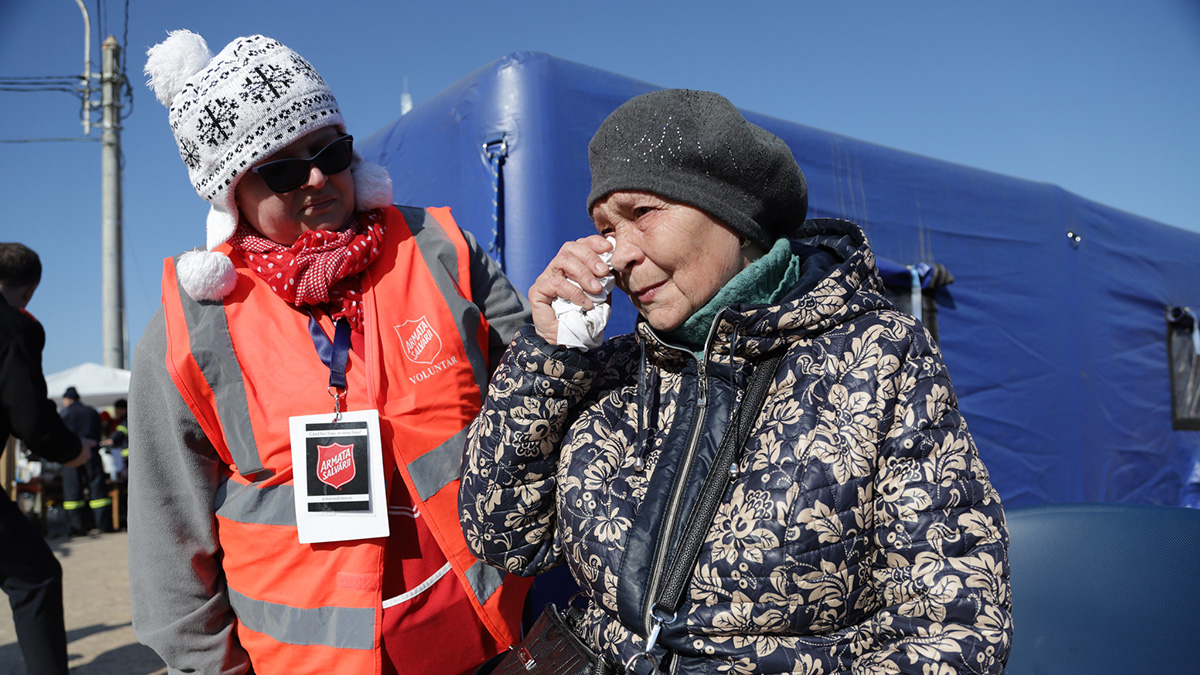The Salvation Army is using cloud technology to streamline emergency relief efforts and serve communities more effectively during times of crisis.
--------------------------------------------------------------------------------------------------------------------------------------------------------
When a disaster occurs, every moment counts. The Salvation Army springs to action, transmitting vital information, organizing volunteers, providing immediate shelter and food, and providing medical and emotional assistance to vulnerable communities in need.
Timely outreach to an increasingly-global network of communities in need requires innovation: Today, the organization is integrating emerging technologies like cloud to better serve its beneficiaries and improve emergency response time during crises such as the COVID-19 pandemic and the war in Ukraine.
Since its inception, The Salvation Army (TSA) has been unwavering in its commitment to serve those who need it most. Founded in 1865, it now provides essential services in 134 countries across the globe. Their work includes adult rehabilitation centers, disaster relief, housing programs, food banks, financial and employment assistance, medical services, and targeted support for youth and the elderly. These initiatives are all designed to provide immediate assistance while laying the groundwork for long-term, sustainable solutions.
 (1).jpg)
With such a diverse array of programs and far-reaching global network, finding digital solutions became an imperative as the organization’s scope of work continued to grow. “The parallel development of technology has enabled the global Salvation Army to reach people in parts of the world that would have been unimaginable 150 years ago,” explains Vincent Johnsson, change and adoption lead at TSA. “Recent advancements have made it possible to act to emergencies, support development, and connect and transform people’s lives in a much more succinct way, making it possible to easier adapt to local communities’ needs.”
In 2018, The Salvation Army launched the Hive, a project management system that runs on cloud technology, which is used to track and implement a wide range of programs including disaster relief and community development initiatives. The platform grew to include emergency projects, enabling quick access to lifesaving relief activities after a disaster – projects that were previously manually tracked using cumbersome spreadsheets. Now using the Hive, beneficiaries can quickly upload information or project updates, and the organization’s leadership can efficiently analyze and assess how to divert funds to where they are needed most.
When COVID-19 first emerged, the Hive’s flexibility allowed TSA to create a new process and approval structure for COVID-19-related projects within a matter of days in order to rapidly offer support during the uncertainty in the early days of the pandemic. “175 of the 307 COVID-19 response projects were Emergency Projects, the approval process had previously been through face-to-face meetings. The Hive enabled virtual approvals, which was in particular helpful during lockdown, and would have previously been impossible to conduct as efficiently and transparently,” Johnsson says. “Another major change the Hive enabled was scalability; the same rapid approval system could be adopted very quickly for so-called Mission Support projects dealing with institutional funding in order to quickly equip TSA hospitals with ventilators and other COVID-19 treatment systems. Additionally, project management became much easier, as information could easily be added to projects and reports remotely on behalf of the implementing offices, allowing them to concentrate on front line work.”

During the ongoing war in Ukraine, the Hive enabled TSA to structure and organize more than $17 million in immediate support to those fleeing the Ukraine. “The majority of that -- $15 million – is supported through Emergency Projects, which again would have been impossible to coordinate prior to the Hive,” Johnsson adds. “The AWS platform on which the Hive sits has been invaluable to the work The Salvation Army is doing.”
For The Salvation Army, transitioning from running programs on their own local hardware infrastructure to using cloud services offered TSA several other advantages such as scalability, accessibility, and cost savings. The organization was able to reduce operational costs that were previously used for server management and dedicate critical resources where they can make a greater impact. “The ability to spin up new resources as required is invaluable in allowing us to minimize our day-to-day running costs, but still being able to scale as required to meet the extra demand that results from specific emergencies that we respond to,” Johnsson says. Cloud technology is also creating a better experience for users in the communities The Salvation Army serves: “AWS content delivery networks allow us to place data closer to them, making our applications more responsive and useable in the remote locations in which we work,” he adds. Using Translate, a cloud service powered by artificial intelligence, has also enabled TSA to allow its applications’ users to upload and view data and documents in their own languages. “As well as making the experience better for our users, this has increased the accuracy of the data we receive, as we no longer face the issue of things being ‘lost in translation’ for users whose primary language isn’t English.”

Today, The Salvation Army continues to offer support for vulnerable communities around the world, including continued outreach for Ukrainians in need. The organization is working hard to provide warm clothing, bedding, and meals to those impacted by the ongoing crisis. Innovations like the Hive and integration of emerging technologies like AI and cloud ensure that they can continue to offer services to those who need them the most.
“We live in an ever-changing world, with an increasing demand for aid and support. Today, we have a better understanding of interrelationships between emergency, aid, development, and prevention, as well as the relationship between humans, the environment, and technology,” Johnsson says. “A growing need is developing for fast and easily-accessible information and the prioritization of available resources for those with the greatest needs – all while keeping The Salvation Army’s values at the forefront.”
To learn more about the global work of The Salvation Army, please visit www.salvationarmy.org.uk
Learn more about how cloud technology can help charities make a bigger impact here.











Recent Stories